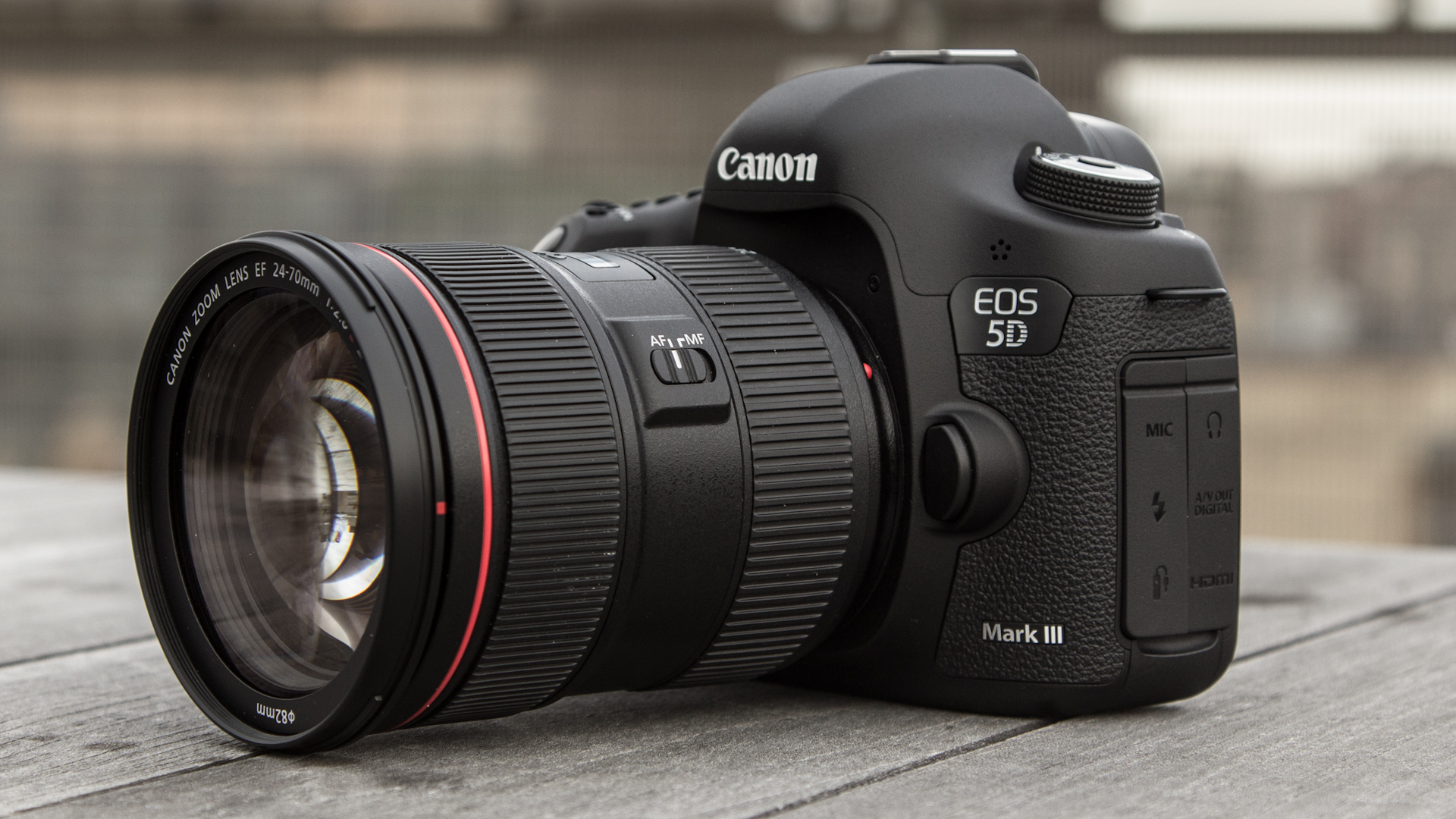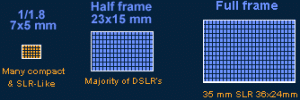Introduction
D-SLR cameras are digital cameras with interchangeable lenses. They simulate the construction and features of analog SLR cameras, the only difference is the use of a imaging sensor and necessary electronics instead of film. Because the use of SLR technology they lack the live LCD preview and also don’t feature a movie mode. (Exception will make cameras like Olympus E-330 Evolt, which was the first to feature continuous LCD preview as of 26 Jan 2006).
First commercial available DSLR camera was the DCS 100 introduced in 1991 by Kodak. However, Nikon was the first to reveal a DSLR camera in 1986, but was only a prototype. The DCS 100 featured a 1,3 mega pixels CCD sensor and cost almost $30.000.
Various companies have manufactured DSLR cameras over time, like Pentax, Sigma, Olympus, Kodak, Samsung, Fujifilm, Konica Minolta and Sony. But Canon and Nikon have the widest range of DSLR cameras from the low end to professional types.
There are four subcategories of DSLR cameras in the sense of targeted market (users):
– Low-end – Canon EOS Rebel XT/300D; Nikon D50
– Entry-level – Canon EOS 20D; Nikon D70
– Mid-range (Semi-pro) – Canon EOS 5D; Nikon D200
– Professional (Pro) – Canon EOS 1DS Mark II; Nikon D2Xs; Kodak DCS SLR/c; Fujifilm S3 Pro
Construction
The camera body is similar to a 35mm film camera, for some people this can be bulk and heavy but is surely conferring a good grip for the hands. In the low-end range, the camera bodies are usually covered with engineering plastic and feature a light metal chassis, there is no dust or water protection. In the entry-level range, some cameras may have metal bodies but still aren’t water and dust proof, however, the construction is very good. The mid-range cameras have light alloy metal bodies and sturdier grips, while the pro bodies are bigger, all magnesium alloy bodies and of course, environmentally sealed.
The TTL – Through The Lens – optical viewfinder is exclusively used for composing the picture. The working principle is very simple and efficient: the image is transposed by the lens on a flip mirror which will redirect the image to a pentaprism based in the top of the camera, this pentaprism redirects the image to a mini loupe which is the viewfinder that we actually look into to view the image. While it may look old-fashioned for the digital age, these viewfinders are the most precise at this time, rendering the viewed scene in its real appearance without any time lag or false light, assuring that ‘what you see is what you get’.
Here you can see the TTL viewfinder diagram.
Usually, DSLR’s feature a status LCD which shows all important camera settings without the need of using the main LCD who obviously will use more battery power. Depending on the camera, this status LCD may be illuminated for proper view in dim light or at night.
The camera lenses can be changed and that’s one of the main benefits of DSLR systems, whatever if you shoot macro, architecture, wildlife and sports or even the moon, you can always switch the lens to comply for that particular situation. Many of the lenses built for the analog film cameras fits very well to a DSLR, and if doesn’t, you can apply a conversion ring to adapt it. More than this, with a lens converter you can double the focal range of any lens. And if all this doesn’t impress you, find out more about the excellent quality of 35 mm type lenses here.
The imaging sensors implemented in DSLR cameras are larger than in any other digital camera types, and that’s the main reason why DSLR’s create superior high quality images than other digitals. (Exceptions make the medium format digital and further). The sensors found in DSLR cameras can be of various types and sizes, below you can see an approximate example of a 1/1,8 general camera sensor and a half frame DSLR sensor compared with the 35mm full frame:
Another useful side is the possibility of attaching a battery grip to the camera, bringing two usability benefits: Adding two batteries in the grip compartment will double the shooting time and pictures taken; This accessory confers a better grip for the hands, especially when shooting vertical. In all professional DSLR cameras, the grip is an incorporated part, being non-removable.
Many DSLR’s have built-in flashes. Usually, these ‘on-board’ flashes are very impressive in terms of power and features, some of them being able of E-TTL exposure. In the majority of pro DSLR’s the built in flash is not an option, highlighting the point that if you use a pro body, you must use an external pro flash too. All DSLR’s feature slide sockets for external flashes.
Features
In comparison with other digital cameras, DSLR’s have full manual controls, and they feature some important functions that are not available (or limited) in other digitals. These may be:
Unlimited bulb mode exposure time, and fastest can be 1/16000;
ISO up to 6400;
Aperture range can reach F90 and more (depends of lens used);
ISO sensitivity bracketing;
White balance bracketing;
AE Lock;
Double exposure;
Real spot metering;
Multi spot metering;
Manual selectable AF points;
Continuous mode up to 8 fps;
High flash X-Sync;
Mirror lock up (MLU);
Depth of field preview (DOF).
A DSLR equipped with an external flash may have the next features:
E-TTL / E-TTL II;
High speed sync with the fastest shutter time of the camera;
Flash exposure compensation;
Flash exposure bracketing;
Flash exposure lock.
The extra features may be:
Voice annotation;
Wireless file transfer;
Selectable colour spaces;
Wireless multi-flash support;
GPS connection.
Because of the SLR design and its sensor technology, the option for video recording is not available. Being tools designed especially for photography, DSLR’s photographic features are multiple and can satisfy the needs of any pretentious photographer in any circumstances.
In program mode (full-auto), the camera is acting similar with a point and shoot camera: half pressing the shutter will meter the ambient light, setting the correct exposure and focusing the selected subject, full pressing the shutter will take the image.
Any DSLR camera, like many analog 35mm and some digital SLR-Like cameras, feature two important half-automated modes:
– Aperture priority mode allows you to manually select the desired aperture, letting the camera to find the right shutter time for that setting.
– Time priority mode allows manual setting of the shutter time while the camera will find the appropriate aperture for it.
Full manual mode, enables full manual control of all the camera settings.
Advantages
– The use of bigger sensors compared with other digital cameras, makes DSLR’s recognized for their high quality noise-free images.
– Very fast in operation, for both auto-focus and shutter lag.
– The full manual mode and essential photographic features borrowed from the mature film cameras, makes them proper tools for photography.
– Interchangeable lenses bring unlimited shooting possibilities.
– The TTL viewfinder allows previewing the exact scene which follow to be captured. – Large variety of useful accessories, similar to film cameras.
– The support for smart external flash units and wireless connectivity, allows advanced lightning and diversified illumination setups.
Disadvantages
– More expensive to purchase compared with SLR-Like cameras. – Good quality lenses can clear up your $ savings. – May be bulky to carry around. – The need for sensor cleaning (where auto clean technology isn’t present). – Doesn’t feature movie mode (they are ‘just’ distinct photographic tools).
Conclusion
Their fast working speed and high quality images makes DSLR’s the preferred cameras by both serious amateurs and professional photographers. Is also the perfect option for news / press photographers.
While DSLR’s may be comfortable cameras to use for studio or outdoor shoots, when top of the line image quality and resolution is desired, nature and advertising photographers will use medium or large format cameras. Still, is no doubt that DSLR’s are some tremendous photographic tools that can be used in many photographic activities, offering fine results.

